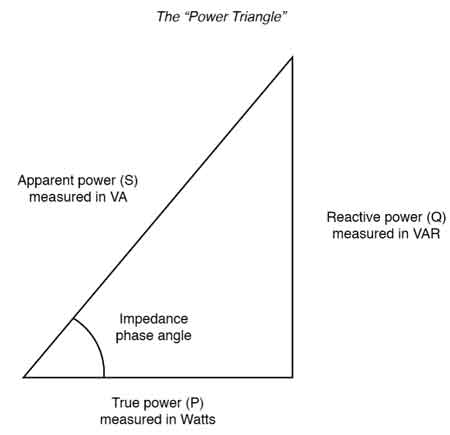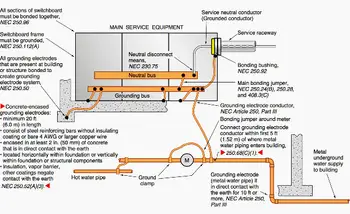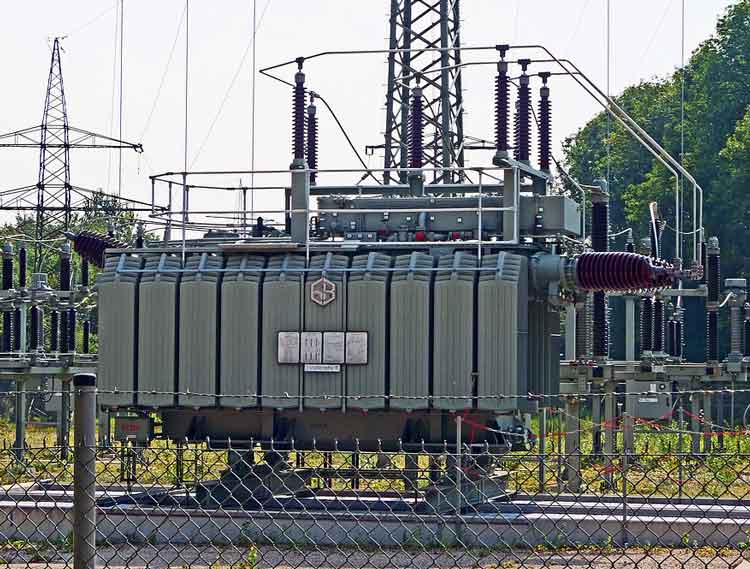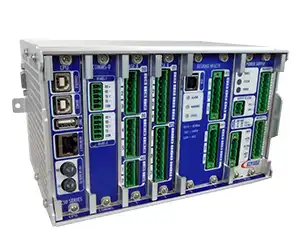Apparent Power in AC Circuits
By R.W. Hurst, Editor

Grounding and Bonding and The NEC - Section 250
Our customized live online or in‑person group training can be delivered to your staff at your location.

- Live Online
- 12 hours Instructor-led
- Group Training Available
Download Our OSHA 4475 Fact Sheet – Being Aware of Arc Flash Hazards

- Identify root causes of arc flash incidents and contributing conditions
- Apply prevention strategies including LOTO, PPE, and testing protocols
- Understand OSHA requirements for training and equipment maintenance
Apparent power measures the total power in an AC circuit, combining real power (watts) and reactive power (VAR). Expressed in volt-amperes (VA), it indicates the overall energy demand of electrical systems, helping size transformers, generators, and other electrical equipment.
What is Apparent Power?
Apparent Power: Symbol S, measured in volt-amperes (VA) or kilovolt-amperes (kVA). Reactive Power: Symbol Q, measured in volt-ampere reactive (VAR) or kilovolt-ampere reactive (kVAR).
✅ Represents the combined real and Q in AC circuits.
✅ Measured in volt-amperes (VA) to determine total energy demand.
✅ Used for sizing electrical components like transformers and generators.
Power Quality Analysis Training
Request a Free Power Quality Training Quotation
The calculation of apparent power involves multiplying the circuit voltage by its current (S = VI). In purely resistive loads, S matches active power exactly because voltage and current align. In inductive or capacitive loads, voltage and current diverge, making S larger due to the reactive component.
Comparison of Real, Reactive, and Apparent Power
| Power Type | Symbol | Unit (SI) | Description |
|---|---|---|---|
| Real Power | P | Watts (W) | The actual power consumed by devices to perform useful work. |
| Reactive Power | Q | Volt-Amperes Reactive (VAR) | Power stored and released by inductive or capacitive elements. |
| Apparent Power | S | Volt-Amperes (VA) | The combination of real and reactive power in an AC circuit. |
| Power Factor | PF | Ratio (0 to 1) | The ratio of P to apparent power, indicating efficiency. |
Apparent Power Formula Explained
The formula for calculating apparent power is:
S = VI
where S is measured in VA, V is the voltage in volts, and I is the current in amperes.
The formula shows that S of a circuit is proportional to the product of its voltage and current, regardless of the nature of the load. Therefore, it is essential to know both the voltage and current to determine the S of a circuit. See this page for a more detailed description of an apparent power calculator.
Active, Reactive, and Apparent Components
Active power (watts, W) is the actual energy used to perform work. Q (VAR) sustains fields in devices like transformers and motors without directly performing work. Apparent power (VA) is the combination of active and reactive components, forming what is known as complex energy. The magnitude of complex energy is represented by apparent power.
Test Your Knowledge About Power Quality!
Think you know Power Quality? Take our quick, interactive quiz and test your knowledge in minutes.
- Instantly see your results and score
- Identify strengths and areas for improvement
- Challenge yourself on real-world electrical topics
The ratio between the active and apparent components is described by the power factor (PF), which ranges from 0 to 1. A PF of 1 indicates maximum efficiency with no wasted reactive component. A lower factor indicates higher reactive use, which reduces efficiency, increases costs, and places extra demand on infrastructure.
Significance in AC Circuits
Recognizing and managing apparent power ensures accurate sizing and efficient operation of electrical infrastructure. Resistive loads consume only active energy, whereas inductive or capacitive loads require additional reactive elements, which increase S and demand more from supply systems.
Visualization with a Triangle
A "power triangle" visually demonstrates relationships among active, reactive, and apparent elements. Here, the hypotenuse represents apparent power, the adjacent side represents active (real) energy, and the opposite side represents reactive energy. The angle between the apparent and active sides defines the PF angle, which is critical for efficiency calculations.
Measurement Methods
Wattmeters measure both active and reactive components, enabling precise calculation of apparent and real components and the PF. In three-phase systems, total apparent energy is the sum of apparent energies from each phase.
PF Correction
Applying correction techniques, such as capacitors or inductors, reduces reactive demands and lowers overall apparent demand (kVA). This correction leads to more efficient energy use, cost savings, and reduced strain on electrical equipment.
An inductive load in an electrical circuit causes current to lag behind the voltage, resulting in a significant phase angle between voltage and current. This angle influences the relationship between active power and Q, as inductive loads require more Q to sustain their magnetic fields. The voltage used in such circuits is typically measured in units of volts, ensuring compatibility with various supplies. Distinguishing clearly between Q and true power (also known as active power) is crucial for accurately sizing and efficiently managing electrical systems, especially when dealing with inductive equipment such as motors and transformers.
Frequently Asked Questions
What is the difference: apparent power vs real power?
P is the energy used to do work, while S is the total power consumed or delivered by an AC circuit. P is expressed in watts (W), while S is expressed in volt-amperes (VA).
What is the PF, and how does it relate to apparent power?
PF is a measure of the amount of S of a circuit that is being converted into useful work. It is the ratio of P to S and is expressed as a decimal or a percentage. The PF is related to S because it reflects the amount of both real and Q in the circuit. PF indicates the percentage of the S that is doing real work.
PF can also define the angle between the voltage and current waveforms because the cosine of this angle is the PF. (Example Cosine 30° = 0.866 PF).
Low PF indicates that more current is being consumed than is necessary for the given real energy demand. This additional current increased the kVA demand on the electrical source and can lead to increased circuit conductor and transformer losses.
What is the difference between active power and apparent power?
Active power performs actual tasks, while apparent power represents total energy demand or delivery in an AC circuit, combining both active and reactive components.
What is PF, and why is it important?
PF measures the efficiency of converting apparent energy into active energy. A high PF indicates efficient energy use, directly impacting operational efficiency and costs.
How does Q affect electrical systems?
Q does not perform direct work but sustains the necessary electromagnetic fields in equipment. High Q increases apparent energy, leading to larger infrastructure requirements and potentially higher costs.
Related Articles








